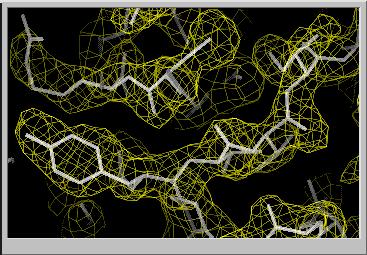|
|
|
|
|
|
|
Resolve
Tom Terwilliger, Los Alamos National Laboratory |
||
|
|
Resolve
is a program that improves electron density maps.
Resolve uses a maximum-likelihood approach to combine experimental X-ray diffraction information with knowledge about the expected characteristics of an electron density map of a macromolecule. You can run resolve to improve your maps right after using SOLVE
or another program to solve your structure.
|
|
|
Resolve uses a new mathematical formulation to directly maximize the total likelihood of the phases. Other approaches rely on phase recombination where the optimal statistical weighting of experimental and modified phases is not known. |
|
|
Anyone with a permanent SOLVE license can download a free version of resolve that includes maximum-likelihood solvent flattening and histogram matching. |
|
|
The full version of resolve (which is still in a development and testing phase) will use many more features of electron density maps (non-crystallographic symmetry, fragments of structure, partial model information) to improve and extend crystallographic phases. |
|
|
The mathematics behind resolve and examples of its use are described in the article "Reciprocal-space solvent flattening," by T. C. Terwilliger appearing in Acta Crystallographica D 55, 1863-1871. |
